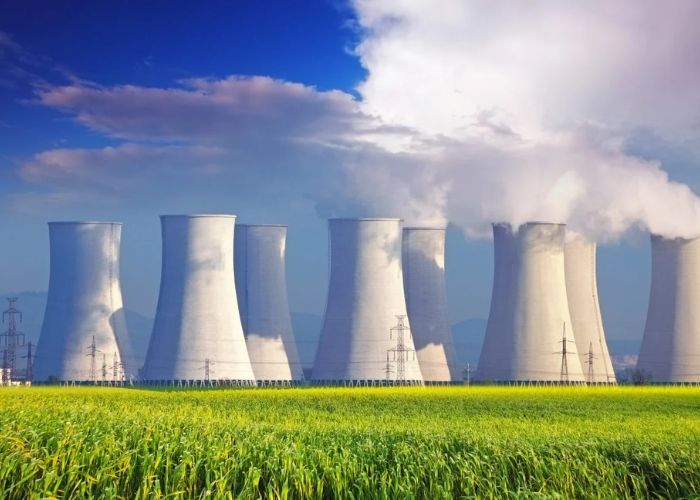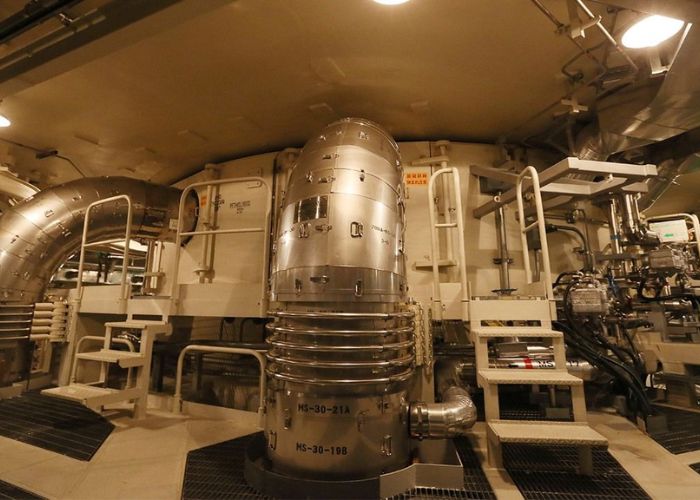My experience of more than seven years in the nuclear energy sector makes me eager to share news about the latest developments at Japan’s biggest nuclear power plant, the Kashiwazaki-Kariwa Nuclear Power Plant. As a symbol of Japan’s commitment to clean, safe nuclear electricity, Kashiwazaki-Kariwa has cutting-edge new safety systems and enhanced earthquake protection. Let’s read below about “Kashiwazaki-Kariwa – Japan’s Biggest Nuclear Power Plant Updates”.
Kashiwazaki-Kariwa yields 8,212 MW of electricity from its 7 reactor units; it is situated in Niigata Prefecture on the shores of the Sea of Japan. About fifteen percent of Japan’s nuclear power capacity is accounted for by this. Tokyo Electric Power Company (TEPCO) runs the facility.
Table of Contents
Kashiwazaki-Kariwa – Japan’s Biggest Nuclear Power Plant Updates
After the horrific 2011 Tohoku earthquake and tsunami—which also caused the Fukushima nuclear disaster—Kashiwazaki-Kariwa went offline. Nevertheless, TEPCO has been making great strides in the years following these incidents to bring Kashiwazaki-Kariwa up to modern safety standards in preparation for resuming reactor operations.
Major Earthquake Resistance Upgrades
Because of its location in a seismically active area, Kashiwazaki-Kariwa places a premium on earthquake safety. Even plants engineered to withstand powerful earthquakes can be susceptible, as the 2011 disaster demonstrated. As a result, TEPCO has upgraded Kashiwazaki-Kariwa with state-of-the-art earthquake protection measures.
For instance, concrete reinforcements and extra steel bracing have been used to fortify the reactor structures. Additionally, sensitive machinery has been moved to safer sections of the reactor buildings. To safeguard operators in the event of an earthquake, the emergency control rooms are equipped with 3-foot thick shock-absorbing walls.
Huge shock absorbers have been installed beneath each reactor building, which is the most remarkable modification. A technique called “seismic isolation” lets the whole reactor building tremble with an earthquake, dampening the quakes before they hit the reactor itself. As a result of its remarkable engineering, Kashiwazaki-Kariwa is perhaps the most earthquake-proof nuclear power facility in the world.
State-of-the-Art Emergency Preparedness
Based on the lessons learned from Fukushima, Kashiwazaki-Kariwa has improved emergency preparedness and made their buildings more earthquake resistant.
One example is the construction of a new emergency response center on elevated land that is more resilient to earthquakes and tsunamis. This facility has been outfitted with improved communication equipment. Additionally, TEPCO has strategically placed emergency vehicles, equipment, and radiation monitoring drones around the plant.
Kashiwazaki-Kariwa currently has cooling water pumps and backup power sources housed in underground bunkers. In the event that all outside water and power sources are cut off, these can keep the reactors at a safe cooling temperature, avoiding a meltdown.
With an additional 750,000 cubic meters of storage space, the plant can keep its reactors cold for about two weeks in the event of a water shortage. The reactor containments have undergone upgraded venting mechanisms to avoid the potentially lethal accumulation of hydrogen gas.
Advanced Reactor Monitoring
Kashiwazaki-Kariwa is home to state-of-the-art monitoring and control systems that TEPCO has installed utilizing cutting-edge digital technology. New software and interfaces have been installed in control rooms to provide operators with better monitoring and control capabilities.
Read More:- GE H-Class Turbines – Top Gas Power Plants in the USA for 2024
Temperature, pressure, flow rate, vibration, and radiation levels are just some of the crucial characteristics that Kashiwazaki-Kariwa uses smart sensors to track throughout the plant. Data is sent in real-time to control rooms and operators are automatically notified if it goes above certain safety limits.
Modern digital regulators and circuitry have also been incorporated into the reactor control systems to enhance monitoring, control, and reliability. Microprocessors are able to automatically respond to system problems since they continuously scan the system.
With the installation of these state-of-the-art monitoring systems, Kashiwazaki-Kariwa operators now have unprecedented visibility into plant status. This improves security by allowing for quick action in the event of any unusual circumstances.
Enhanced Defense-in-Depth
Using a “defense-in-depth” strategy with numerous redundant levels of security, Kashiwazaki-Kariwa follows worldwide best practices for safety. This strategy has been even more solidified by the updates.
Each reactor pressure vessel at Kashiwazaki-Kariwa is encased in a steel inner containment vessel that is approximately 6 inches thick, in addition to the sturdy reactor buildings. That way, even if the pressure vessel were to break, the radiation wouldn’t leak out.
According to japantimes, Additionally, the reactor makes use of state-of-the-art fuel cladding designs to keep the coolant free of radioactive fission products. Furthermore, additional backup cooling water and power systems are being built on top of the existing ones.
A number of passive safety measures are also available on Kashiwazaki-Kariwa, and they do not use any power whatsoever. In the event that the reactor pressure goes below a certain threshold, the Advanced Accumulators will passively inject cooling water through gravity. In the plant’s containments, you can find passive catalytic hydrogen recombiners as well.
The goal of Kashiwazaki-Kariwa’s defense-in-depth strategy is to forestall accidents altogether. In the event that problems arise, there are sufficient safeguards to avoid the emission of radioactive materials.

Community Outreach and Transparency
The local Niigata community has been actively engaged with TEPCO in an effort to rebuild public trust following Fukushima, while safety upgrades have taken precedence. In order to better prepare for emergencies, the company has stepped up its communication, openness, and transparency in the area.
Read More:- Siemens J-Class Gas Turbines – Irsching 4 Power Plant in Germany
The improvements at Kashiwazaki-Kariwa are showcased on a regular basis during public tours given by TEPCO. It has also conducted multiple evacuation exercises with nearby residents to make sure everything is ready in case of an emergency. Assuring the community that safety is a priority is achieved through these outreach initiatives.
Visitors to Kashiwazaki-Kariwa can learn about nuclear power and the extensive safety procedures followed at the plant at the public information center that is operated by the facility. TEPCO is actively working to foster awareness in the community through this transparent process.
The Road Ahead
Despite the enormous strides forward, TEPCO still has a ways to go before Kashiwazaki-Kariwa can begin operations again. In the future, the corporation intends to fortify the plant’s security by establishing supplementary water and electricity sources. The nuclear regulators and TEPCO are still working closely together to make sure the renovations are up to the new, stringent safety standards Japan put in place following Fukushima.
Thanks to the extensive upgrades that have been carried out, Kashiwazaki-Kariwa is now one of the most secure and earthquake-proof nuclear power facilities in the world. The Japanese people should have full faith in the facility’s readiness to restart operations thanks to the state-of-the-art technology and improved safety measures.
Conclusion
Japan is committed to achieving energy independence and sustainability, and a reactivated Kashiwazaki-Kariwa, with its reliable and versatile baseload electricity, will play an important role in this transition. Kashiwazaki-Kariwa, being the biggest and most advanced nuclear plant in Japan, will for many years to come play a leading role in ensuring the responsible and safe use of nuclear power in Japan. I hope you like reading “Kashiwazaki-Kariwa – Japan’s Biggest Nuclear Power Plant Updates”.

Mohsen Ali is a Chemical Engineer with over a decade of experience in the energy sector. Specializing in power plant efficiency and sustainability, he brings expert insights to borderpowerplants.org. Mohsen holds a Master’s degree in Chemical Engineering and is dedicated to advancing sustainable energy solutions. Connect with him on Instagram or LinkedIn for more insights.
